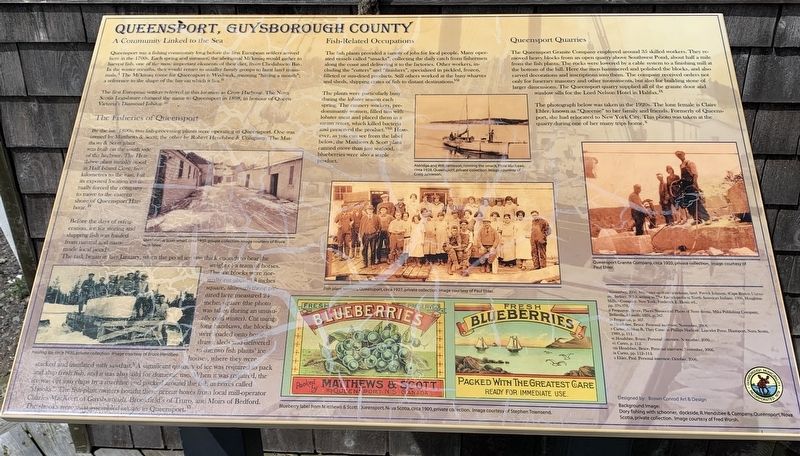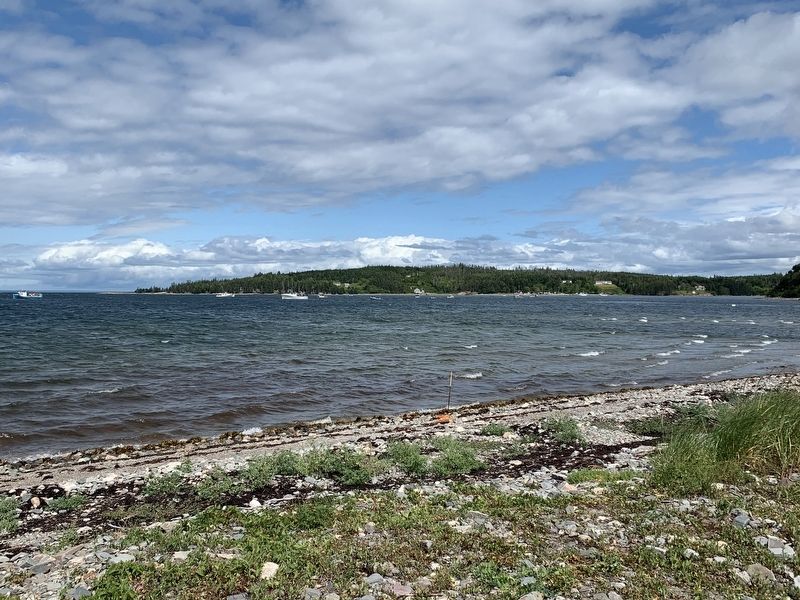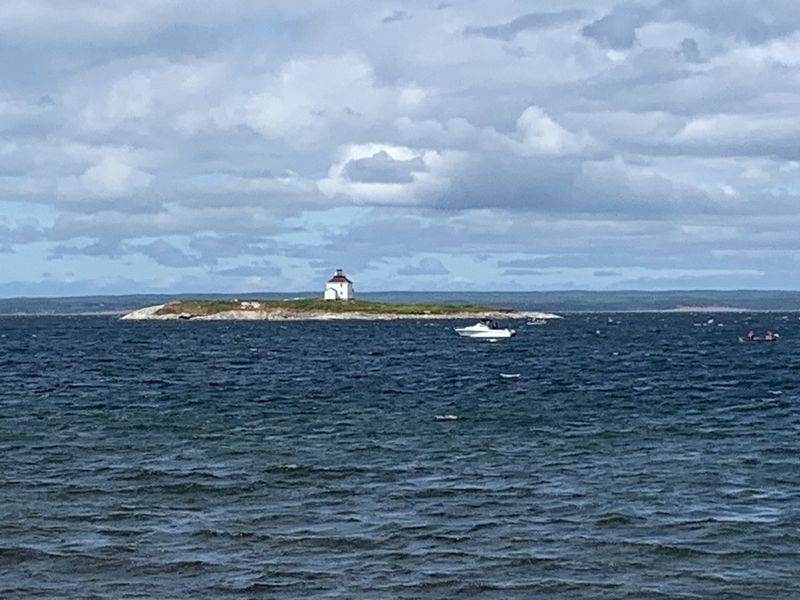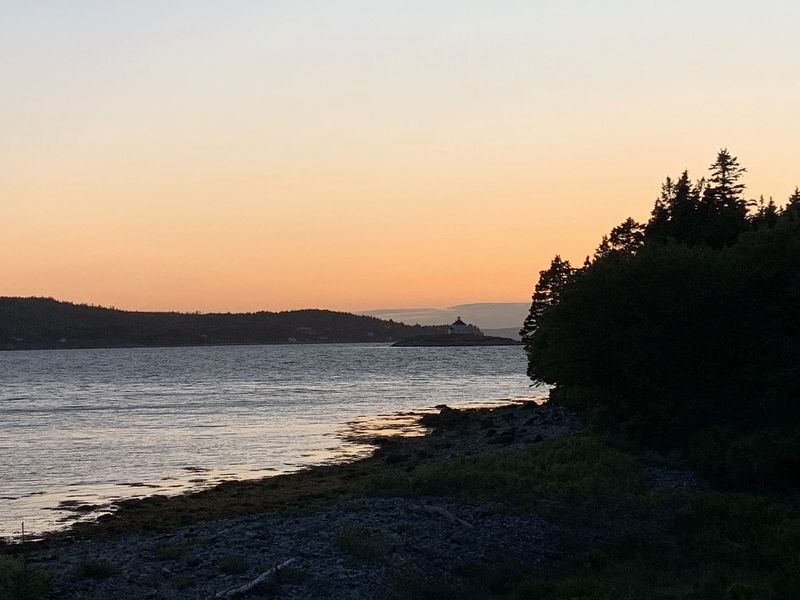Queensport in Guysborough County, Nova Scotia — The Atlantic Provinces (North America)
Queensport, Guysborough County
A Community linked to the Sea
Queensport was a fishing village community long before the first European settlers arrived here in the 1700s. Each spring and summer, the aboriginal Mi’kmaq would gather to harvest fish, one of the most important elements of their diet, from Chedabucto Bay. In the winter months, they would return to smaller family groups to hunt land mammals. The Mi’kmaq name for Queensport is Wedonik, meaning “having a mouth”; a reference to the shape of the bay on which it lies.
The first European settlers referred to this location as Crow Harbour. The Nova Scotia Legislature changed the name to Queensport in 1898 in honour of Queen Victoria’s Diamond Jubilee.
The Fisheries of Queensport
By the late 1800s, two fish-processing plants were operating in Queensport. One was owned by Matthews & Scott; the other by Robert Hendsbee & Company. The Matthews & Scott plant was built on the south side of the harbour. The Hendsbee plant initially stood in Half Island Cove, five kilometres to the west, but its exposed location eventually forced the company to move to the eastern shore of Queensport Harbour.
Before the days of refrigeration, ice for storing and shipping fish was hauled from natural and man-made local ponds. The task began in late January, when the pond ice was thick enough to bear the weight of a team of horses. The ice blocks were normally cut about 18 inches square, although those pictured here measured 24 inches square (the photo was taken during an unusually cold winter). Cut using long handsaws, the blocks were loaded onto horse drawn sleds and delivered to the two fish plants’ ice houses, where they were stacked and insulated with sawdust. A significant quantity of ice was required to pack and ship fresh fish, and it was also sold for domestic use When it was required, the ice was cut into chips by a machine and packed around the fish in boxes called ”shooks.” The fish-plant owners bought the precut boxes from local mill-operator Charles MacKeen of Guysborough, Brookfield’s of Truro, and Moirs of Bedford. The shooks were then assembled on site in Queensport.
Fish-Related Occupations
The fish plants provided a variety of jobs for local people. Many operated vessels called “smacks”, collecting the daily catch from fishermen along the coast and delivering it to the factories. Other workers, including the “cutters” and “finishers”, specialized in pickled, frozen filleted, or sun-dried products. Still others worked at the busy wharves and sheds, shipping crates of fish to distant destinations.
The plants were particularly busy during the lobster season each spring. The cannery workers, predominately women, filled tins with lobster meat and placed them is a steam retort, which killed bacteria and preserved the product. However, as you can see from the label below, the Matthews & Scott plant canned more than just seafood. Blueberries were also a staple product.
Queensport Quarries
The Queensport Granite Company employed around 35 skilled workers. They removed heavy blocks from an open quarry above Southwest Pond, about half a mile from the fish plants. The rocks were lowered by a cable system to a finishing mill at the bottom of the hill. Here the men hammered and polished the blocks, and also carved decorations and inscriptions into them. The company received orders not only for funerary masonry and other monuments, but also for building stone of larger dimensions. The Queensport quarry supplied all the granite door and window sills for the Lord Nelson Hotel in Halifax.
The photograph below was taken in the 1920s. The lone female is Claire Ehler, known as “Queenie” to her family and friends. Formerly of Queensport, she had relocated to New York City. This photo was taken at the quarry during one of her many trips home.
References were not transcribed.
Erected by Guysborough Municipality
.
Topics. This historical marker is listed in these topic lists: Industry & Commerce • Native Americans • Settlements & Settlers. A significant historical year for this entry is 1898.
Location. 45° 20.34′ N, 61° 15.924′ W. Marker is in Queensport, Nova Scotia, in Guysborough County. Marker is on Marine Drive (Nova Scotia Route 16), on the left when traveling east. Touch for map. Touch for directions.
Other nearby markers. At least 8 other markers are within 13 kilometers of this marker, measured as the crow flies. Our Forefathers (here, next to this marker); #5 Radar Unit R.C.A.F Station (approx. 7.9 kilometers away); We Will Remember/Nous Nous Souviendrons (approx. 8 kilometers away); Captain Savalette (approx. 10.6 kilometers away); Welcome to Place Savalette (approx. 10.6 kilometers away); The Voyage of Prince Henry Sinclair (approx. 11.6 kilometers away); Folklore & Trivia (approx. 12.2 kilometers away); Port Felix (approx. 12.2 kilometers away).
Also see . . .
1. The Mi'kmaq. Cape Breton University site providing additional information on the Mi'kmaq. (Submitted on October 4, 2019, by Steve Stoessel of Niskayuna, New York.)
2. Guysborough County. (Submitted on October 4, 2019, by Steve Stoessel of Niskayuna, New York.)
Additional keywords. Fish
Credits. This page was last revised on July 23, 2020. It was originally submitted on October 4, 2019, by Steve Stoessel of Niskayuna, New York. This page has been viewed 356 times since then and 46 times this year. Last updated on October 17, 2019, by Steve Stoessel of Niskayuna, New York. Photos: 1, 2, 3, 4. submitted on October 4, 2019, by Steve Stoessel of Niskayuna, New York. • Andrew Ruppenstein was the editor who published this page.



